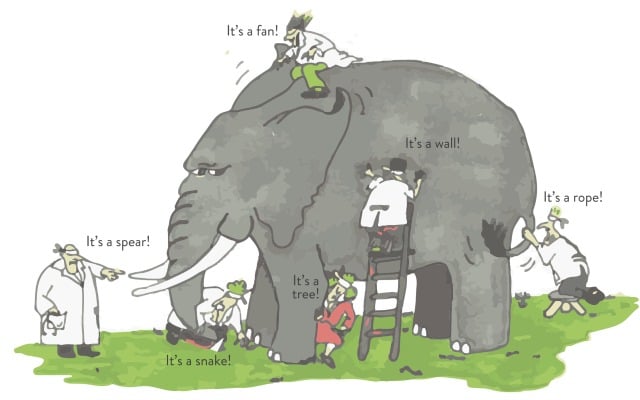The most beautiful things you can say to another are I love you, I’m proud of you – and I have a special price, only for you.
There is just something about the feeling of getting seen in such a special way that it results in something as tangible as a lower price. It makes us more open to whatever there is to offer.
Even though the “special price, only for you” is more of a joke than anything these days, there is a reason why people still use it.
It works because we love to feel special.
As the economic downturn market and unpredictable future keeps on keeping people on their toes regarding new purchases, holding on to existing customer relationships has become more critical than ever. Just like in any relationship, making the other party feel like they are the only one is extremely important in order to make sure they stick around.
But, it's not easy, especially if different parts of the organisation are trying to do that in their own way – or worse still, don’t do it at all. The mixed messages of “You are so special!” in marketing are followed by “Who you were again?” in customer service.
To make every customer feel like they are being treated like royalty they are, the organization needs a common plan for how to make that happen.
This is how you form a personalisation target state
The most important thing is to have a clear direction and a plan that everyone can follow. This plan works as a North Star that everyone should turn to when they make decisions in their own corner of the organisation that personalisation is somehow tied to.
As a consultant, one of the most striking things is that in many companies and in teams inside of companies, the interpretation of complex hype terms like personalisation and AI varies a lot. It's no wonder, as teams and individuals approach the term through their own history, level of knowledge, perspective, and goals.
In the old tale of blind men and an elephant, a group of blind men come across an elephant. Each one touches it from a different part to determine what it is, resulting in very different outcomes from a snake to a wall, as shown in the picture.

As personalisation is strongly impacted by many different streams of bigger organisations, to drive it forward, it's important to understand the different angles – the snakes and walls of different professionals – whose input and buy-in eventually determine the outcome.
Step one: gather input
Most likely, especially in larger organizations, there are teams which have implemented personalisation already in some way and, in the best case, have quite a few learnings of what works and what doesn't.
Those should definitely be taken into consideration when forming a common understanding of personalisation. Real-life use cases of personalisation that have already validated the value on a small scale and are in use are good input for the process of forming a joint understanding throughout the whole company. When presented right, they serve both as inspiration and a business argument.
Key actions:
- Document what personalisation-related actions are currently done
- Form an understanding of what the term personalisation means to different stakeholders
- Gather business requirements: have a conversation about how personalisation can support reaching different business goals
- Get buy-in from important stakeholders: ask how personalisation would make their work easier and more impactful
Step two: form a plan
There are three main things that the personalisation plan, the target state if you will, should do: help everyone understand, be aligned with business targets, and inspire ideas and action.
Help everyone understand
A business person might describe personalisation through CRM, whereas a developer could think about machine learning and a designer unified customer experience.
The plan makes sure everyone knows what we mean when we talk about personalisation and making customers feel special. It gets everyone on the same page. Using images, prototypes, and concrete examples of what personalisation could be will help people understand, especially as they most likely have different ideas of what personalisation is.
Align with business targets
Even though the goal of personalisation is to make the customers feel special, there needs to be something in return. The plan should clearly, preferably in a verbal and numerical way, indicate the business dimension, and business goals, of personalisation.
Inspire ideas and action
The target state should motivate employees to think creatively, break free from routine and explore innovative solutions. It should result in people thinking about what they as individuals and what their team could do to build better personalisation for customers.
In Conclusion
Forming a personalisation target state is far from a mere exercise—it's a strategic commitment to optimising customer experiences. With a well-defined plan in place, organisations can bridge gaps in customer interactions, nurturing loyalty while driving business growth.
By emphasising people, refining processes, and leveraging appropriate technologies, companies can unleash personalisation's true potential. The journey toward a unified Personalisation Target State is an investment yielding dividends in both customer satisfaction and business prosperity.
Join our upcoming webinar – Growing ecommerce with better personalisation
Grab a cup of coffee and join us bright and early on September 19th at 8.00–8.45 (CET) to discuss how to make personalisation a reality for your ecommerce.
Sign up for free
Growing ecommerce with better personalisation
Join us on September 19th at 8.00 (CET) to discuss how to make personalisation a reality.
Sign up



